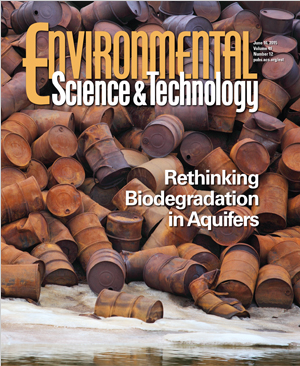Rapid adaptation of a Daphnia magna population to metal stress is associated with heterozygote excess
 There is growing evidence that pollution has consequences that can extend beyond exposed generations and may involve trans-generational responses as well as rapid micro-evolutionary processes. A recent testimony of microevolution in fish of the Elizabeth River in Virginia, a water body so polluted that it has been termed a "toxic hot spot", reported costs of adaptation to this polluted environment. These fish displayed lower survival in clean water and appeared more sensitive to additional stressors. Most ecotoxicological test guidelines are only considering effects within one generation, thus potential detrimental effects across generations are under-evaluated. Here we conducted a natural selection experiment over several generations with a natural Daphnia magna population. Our results suggest that this population was able to adapt to copper and zinc pollution without any strong evidence of associated fitness costs of metal adaptation under clean conditions or exposure to novel stressors (temperature, cyanobacteria, cadmium). Interestingly our study is the first report of an increase in heterozygosity (i.e. different alleles at one or more corresponding chromosomal loci) following multigenerational exposure to metal stress. This is a very important finding as it might reduce one of the potential costs of adaptation, which is reduced genetic variation.
There is growing evidence that pollution has consequences that can extend beyond exposed generations and may involve trans-generational responses as well as rapid micro-evolutionary processes. A recent testimony of microevolution in fish of the Elizabeth River in Virginia, a water body so polluted that it has been termed a "toxic hot spot", reported costs of adaptation to this polluted environment. These fish displayed lower survival in clean water and appeared more sensitive to additional stressors. Most ecotoxicological test guidelines are only considering effects within one generation, thus potential detrimental effects across generations are under-evaluated. Here we conducted a natural selection experiment over several generations with a natural Daphnia magna population. Our results suggest that this population was able to adapt to copper and zinc pollution without any strong evidence of associated fitness costs of metal adaptation under clean conditions or exposure to novel stressors (temperature, cyanobacteria, cadmium). Interestingly our study is the first report of an increase in heterozygosity (i.e. different alleles at one or more corresponding chromosomal loci) following multigenerational exposure to metal stress. This is a very important finding as it might reduce one of the potential costs of adaptation, which is reduced genetic variation.
Scientific abstract
While natural populations can harbour evolutionary potential to genetically adapt to chemical stress, it is often thought that natural selection leads to a general reduction of genetic diversity and involves costs. Here, a 10 week microevolution experiment was conducted with a genetically diverse and representative sample of one natural Daphnia magna population that was exposed to copper and zinc. Both Cu- and Zn-selected populations developed a significantly higher metal tolerance (i.e. genetic adaptation), indicated by higher reproduction probabilities of clonal lines in Cu and Zn exposures than observed for the original and control populations. The complete recovery of the population densities after 10 weeks of Zn selection (following an initial decrease of 74%) illustrates an example of evolutionary rescue. Microsatellite genotyping revealed a decrease in clonal diversity but no change in allelic richness, and showed an excess in heterozygosity in the Cu- and Zn-selected populations compared to the control and original populations. The excess heterozygosity in metal-selected populations that we observed has important consequences for risk assessment, as it contributes to the maintenance of a higher allelic diversity under multi-generational chemical exposure. This study is, to our knowledge, the first report of an increase in heterozygosity following multigenerational exposure to metal stress, despite a decline in clonal diversity. In a follow-up study with the Zn-selected populations we observed no effect of Zn selection on the tolerance to heat and cyanobacteria. However, we observed higher tolerance to Cd in the Zn-selected than in the original and control populations if the 20% effective concentration of Cd was considered (cross-tolerance). Our results suggest only limited costs of adaptation but future research is needed to evaluate the adaptive potential of metal-selected populations to novel stressors and to determine to what extent increased heterozygosity is preserved after genetic recombination following periods of sexual reproduction.
Full reference (link)
Hochmuth, J.D., De Meester, L., Pereira, C.M., Janssen, C.R., De Schamphelaere, K., 2015. Rapid adaptation of a Daphnia magna population to metal stress is associated with heterozygote excess, Environmental Science & Technology. Accepted Manuscript
